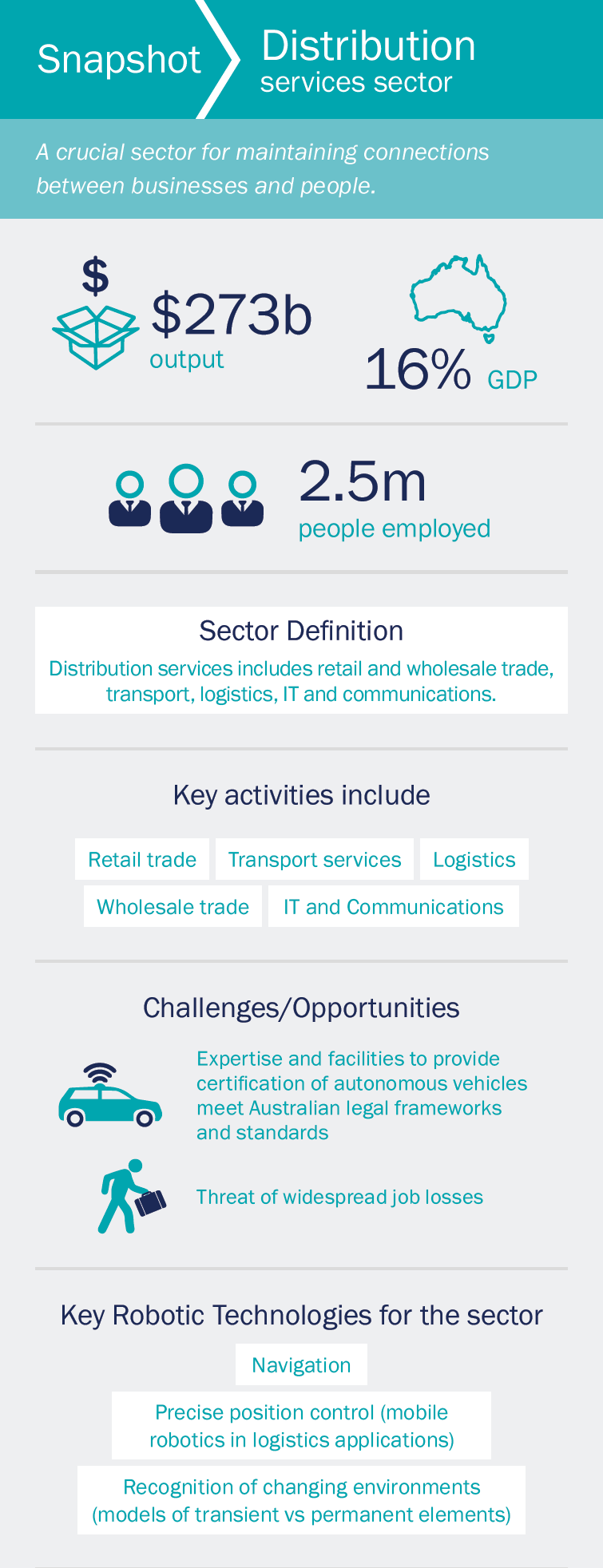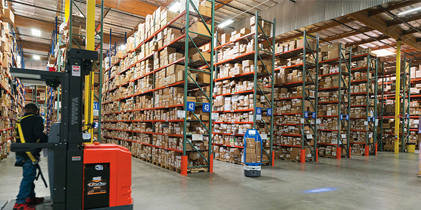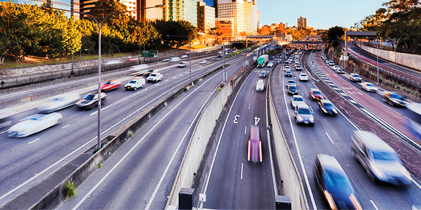
Australia’s distribution services sector
Distribution services is a broad sector encompassing retail and wholesale trade, transport, logistics, IT, and communications. The sector is worth a total of $AU273 billion to the Australian economy (16 per cent of GDP) and employs 2.5 million people [ABS18]. Alone, the Australian logistics industry was estimated to employ 1.2 million people and to have added $AU131.6 million to Australia’s economy (8.6 per cent of GDP) in 2013, with this expected to rise to $AU187 million by 2021. Retail trade is the largest employer within distribution services, employing over 1.2 million people in 2017 [ABS18], and having the largest concentration of the lowest paid service jobs (75 per cent of the national average [ASS00]).
The total size of the sector belies its influence on other parts of the Australian economy, and the enormous disruptive changes the sector will soon face as such services are transformed by robotic technologies. In logistics alone, the volume of service robots being produced globally is rising rapidly, with 25,400 systems known to be installed in 2016 – 34 per cent more than the 19,000 installed in 2015 – accounting for 43 per cent of all the world’s professional service robots [IFRRS17]. The value of worldwide sales of logistic robots is estimated to be $US992 million, and is forecast to grow six-fold, to $US5.8 billion by 2020 [IFRRS17].
The advent of self-driving cars, and their impact on the economy, is worthy of its own roadmap, with international predictions suggesting consumers will be able to buy self-driving cars as early as 2020 [RA15]. Successful operation of driverless cars in Australia’s unique environment and remote areas is likely to require adaptation of existing technologies. Despite the lack of an automotive manufacturing industry in Australia, there are a range of enabling technologies required, which Australia will be well-placed to develop and export. Many of these technologies are enablers for the introduction of robotics technologies in the entire services sector, and therefore, multiple benefits are likely.
The impact on the Australian economy from reduced transportation costs, which will be realised by the introduction of autonomous vehicles, is significant. Transportation inputs produce the strongest proportionate benefits to GDP (at 0.17), with labour cost reductions thought to promote job growth, although the range of impacts is wide [AIR16].


Multiple factors will lead to the distribution services sector adopting robotic technologies...

The application of robotic technologies in distribution services has the potential...

Distribution services have a strong influence on other parts of the...
